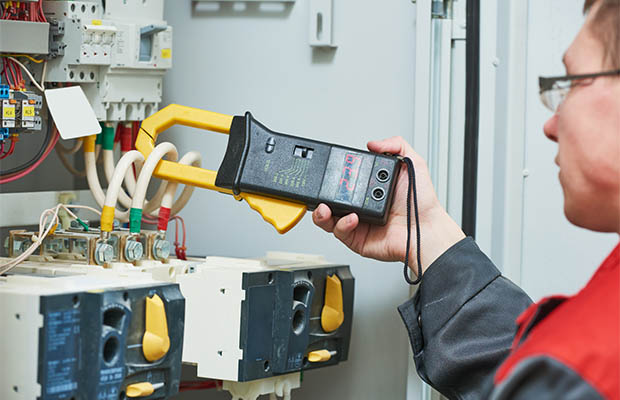

Extend Equipment Life with Preventive Maintenance
By Grainger Editorial Staff 3/22/18


Preventive and corrective maintenance involves regularly scheduled equipment upkeep to avoid sudden and unexpected equipment failure and resulting downtime. For a production environment, it also reduces the total cost of ownership of the equipment asset and extends its expected service life.
Maintenance entails much more than just fixing broken equipment. In fact, a well-designed facility management system generally encompasses four categories of maintenance: emergency (or response), routine, preventive, and predictive.
Here are five assessment programs that will arm your maintenance teams with the right tools to reduce the lifecycle costs of production equipment and help extend their service lives:
- Insulation resistance testing. For electric-powered machinery, high horsepower motors and drivers have insulation that breaks down over time. When it does, it could short the equipment and lead to costly downtime. Using instrumentation such as multi-meters, clip-on ammeters, and other equipment, insulation breakdown can be detected early so that you can schedule that motor or driver for a rewind before further damage occurs.
- Infrared thermography. Switchboards, lighting panels, electrical connections, misaligned motors, couplings, pumps, and other equipment can be surveyed on a periodic basis using thermographic cameras and glasses. There are numerous choices of such equipment. Basic thermographic cameras may be used by everyday personnel. Other, more sophisticated equipment can be stored and used by specialists for more complex thermography checks. Thermography will help identify loose connections, misaligned pumps and motors, faulty wiring, dirty and dusty switchboards, and other conditions. Then maintenance teams can take corrective action and avoid premature failure of the underlying equipment.
- Vibration monitoring. Handheld vibration monitors come in many shapes and sizes, with different capabilities. They are easy to operate; mechanics and workers can use them to take recurring readings on rotating and reciprocating machinery to determine any abnormal vibration patterns. Early detection of such abnormalities and anomalies can alert a need to repair, realign, inspect, and take corrective actions such as balancing or bearing replacement. It may also reveal a foundation or support structure that is either poorly designed, degrading, or inadequate.
- Ultrasonic leak detection. Ultrasonic leak detectors are also available in all shapes and sizes and with varying capabilities. They may be used to detect leaks that are otherwise difficult to assess. They are ideal for finding air leaks in pressurized air systems, refrigerant leaks, and tank and chamber leaks. Leak detection provides useful data and information to fix leaks where and when they occur. Failure to do so can drive abnormal energy consumption, create pressure loss in air systems, and pose a safety hazard to workers who may be breathing toxic substances. They may also be used to detect tiny fluid leaks that will only get larger in time and put an undue load on the equipment that drives the fluid in that system. An ultrasonic leak detector pays for itself in a very short time.
- Fluid analysis kits. Periodically test lubricating oil, grease, hydraulic oil, and other fluids. Ordinarily such fluids are sampled and sent to an outside laboratory for a comprehensive analysis. Maintenance teams should have plenty of sampling kits on hand. Some kits enable them to conduct actual tests such as flashpoint and particulate counts without being a lab worker. Fluids testing is invaluable in determining numerous problems, from leaks to abnormal wear. Ultimately this type of program can save costs in repairs and extend the life of the machinery and equipment that uses such fluids.
Once your assessment programs are in place, build a process that will capture all the data from these initiatives and drive decisions about equipment repair and replacement. Processes should include the following:
- Identify. Determine what actions should be taken based on your assessments and the data that you've gathered. What should be repaired or replaced? What can be deferred to a later date?
- Prepare. Find the resources to take corrective actions based on your assessments. This may include finding the right labor, contractors, and other personnel to repair or replace equipment. It also entails knowing what parts are required and must be ordered to complete the repair or replacement.
- Schedule. Build a schedule of equipment to be repaired or replaced. This means coordinating a repair or replacement timetable with operational requirements. This may be a challenge as some of this work may mean downtime.
- Monitor. The history of when assessment actions were taken, combined with corrective actions such as repair or replacement, should be recorded and archived for future use. This accounting of your equipment maintenance helps others know what has and has not been accomplished.
A robust preventive maintenance program requires assessment followed by corrective action. Combining both requires discipline to manage all facets of the program, from having the right tools, personnel, and training to adequately make assessments to having the right disciplined processes set up to implement corrective actions. A carefully planned and executed preventive maintenance program will go a long way to extend equipment service life and save you from more costly repairs and downtime.
Use this preventive maintenance checklist to keep your equipment well-maintained and to avoid any unplanned downtime.
The information contained in this article is intended for general information purposes only and is based on information available as of the initial date of publication. No representation is made that the information or references are complete or remain current. This article is not a substitute for review of current applicable government regulations, industry standards, or other standards specific to your business and/or activities and should not be construed as legal advice or opinion. Readers with specific questions should refer to the applicable standards or consult with an attorney.






